1. Support for Data Communication.
2. ANSI-SPARC Three-Level Architecture
2.1. External Level
2.1.1. Users’ view of the database.
2.1.2. Describes that part of database that is relevant to a particular user.
2.2. Conceptual Level
2.2.1. Community view of the database.
2.2.2. Describes what data is stored in database and relationships among the data.
2.3. Internal Level
2.3.1. Physical representation of the database on the computer.
2.3.2. Describes how the data is stored in the database.
2.4. Differences between Three Levels of ANSI-SPARC Architecture
3. Database Languages
3.1. Data Definition Language (DDL)
3.1.1. Allows the DBA or user to describe and name entities, attributes, and relationships required for the application
3.1.2. plus any associated integrity and security constraints.
3.2. Data Manipulation Language (DML)
3.2.1. Provides basic data manipulation operations on data held in the database.
3.3. Procedural DML
3.3.1. allows user to tell system exactly how to manipulate data.
3.4. Non-Procedural DML
3.4.1. allows user to state what data is needed rather than how it is to be retrieved.
3.5. Fourth Generation Languages (4GLs)
4. Functions of a DBMS
4.1. Data Storage, Retrieval, and Update.
4.2. A User-Accessible Catalog.
4.3. Transaction Support.
4.4. Concurrency Control Services.
4.5. Recovery Services.
4.6. Authorization Services.
4.7. Integrity Services.
4.8. Services to Promote Data Independence.
4.9. Utility Services.
5. Components of Database Manager
6. All users should be able to access same data.
7. names of authorized users;
8. Software components of a DBMS.
9. Typical functions and services a DBMS should provide.
10. Internal structure of database should be unaffected by changes to physical aspects of storage.
11. Client-server
12. Objectives
12.1. Purpose of three-level database architecture.
12.2. Contents of external, conceptual, and internal levels.
12.3. Meaning of logical and physical data independence.
12.4. Distinction between DDL and DML.
12.5. Purpose/importance of conceptual modeling.
12.6. Function and importance of system catalog.
12.7. Meaning of client–server architecture and advantages of this type of architecture for a DBMS.
12.8. Function and uses of Transaction Processing Monitors.
13. Objectives of Three-Level Architecture
13.1. A user’s view is immune to changes made in other views.
13.2. Users should not need to know physical database storage details.
13.3. DBA should be able to change database storage structures without affecting the users’ views.
13.4. DBA should be able to change conceptual structure of database without affecting all users.
14. System Catalog
14.1. Repository of information (metadata) describing the data in the database.
14.2. One of the fundamental components of DBMS.
14.3. Typically stores:
14.3.1. names, types, and sizes of data items;
14.3.2. data items accessible by a user and the type of access;
14.3.3. usage statistics
14.3.4. constraints on the data;
